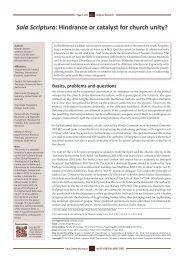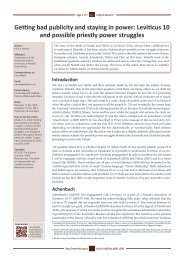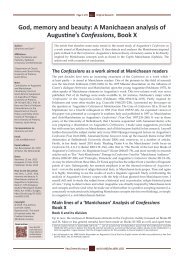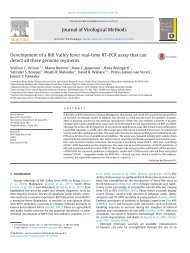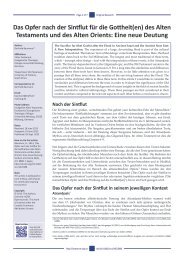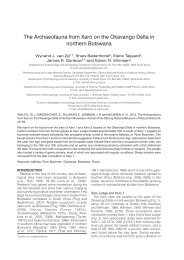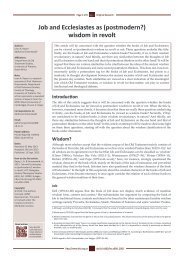View/Open - University of Pretoria
View/Open - University of Pretoria
View/Open - University of Pretoria
You also want an ePaper? Increase the reach of your titles
YUMPU automatically turns print PDFs into web optimized ePapers that Google loves.
Section 6 – Understanding texts (60 marks)<br />
Section 7 – Grammar and text relations (22 marks)<br />
Section 8<br />
– T ext editing (10 marks)<br />
With regard to TALPS, it was decided to include a section on argumentative writing.<br />
At postgraduate level it is essential that students follow specific academic writing<br />
conventions and it is important to test whether students were equipped with this<br />
knowledge. In addition to the question on writing there is a question that tests students’<br />
editing skills. At this stage, however, the test did not include a question requiring students<br />
to write an argumentative text. The concern <strong>of</strong> the developers at this early stage was in<br />
writing the multiple-choice questions. These would then be analysed using TiaPlus Test<br />
and Item Analysis (CITO, 2006) to determine which items did or did not test well. Items<br />
that did not test well were discarded.<br />
The second draft<br />
The second draft <strong>of</strong> TALPS totalled 150 marks and was 120 minutes long. Changes were<br />
made in the following sections:<br />
Section 1 – This section now included only one set <strong>of</strong> sentences. The total marks<br />
remained the same at 5 marks.<br />
Section 4 – 27 questions were retained, each carrying one mark. This section<br />
now carried 27 marks.<br />
The third draft<br />
The third draft version <strong>of</strong> the test became the first pilot for TALPS. This first pilot was<br />
completed in May 2007 with first year students at the <strong>University</strong> <strong>of</strong> <strong>Pretoria</strong> (UP).<br />
Students were given one and a half hours to complete the test. These were students who<br />
were taking the compulsory Academic Literacy module (EOT 110). These results were<br />
measured using TiaPlus Test and Item Analysis (CITO, 2006) which provides measures<br />
at item and test level. Before the first pilot, by which time the test had been reduced<br />
to 100, items were evaluated by the designers to determine the appropriateness/strength<br />
<strong>of</strong> the item. Most changes were made in the Understanding texts section. In the 100-item<br />
test (which was the first pilot) this section had 45 items; in the 88-item test (which was<br />
the second pilot) it had 33 items and then 28 items. The final version <strong>of</strong> the test has 21<br />
items in this section. Justification for this decision was drawn from the analyses done using<br />
the TiaPlus Test and Item Analysis Build 300 (CITO, 2006). According to this, seven items<br />
had very high p-values, meaning that a high percentage <strong>of</strong> the test population got this<br />
answer correct.<br />
177<br />
Journal for Language Teaching | Tydskrif vir Taalonderrig



